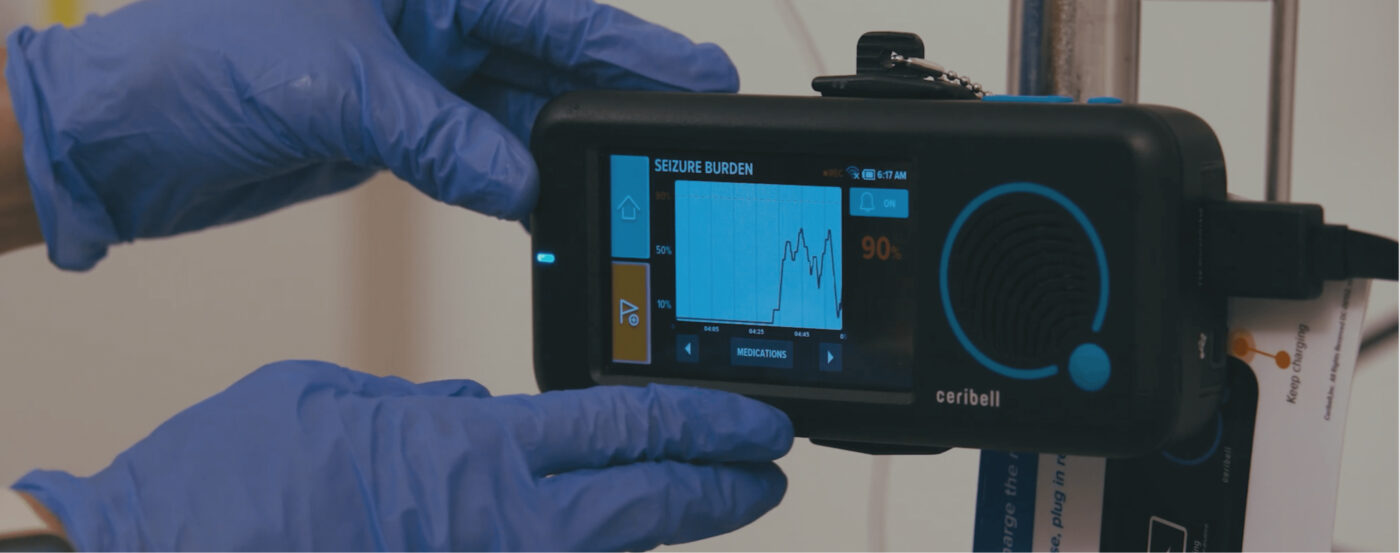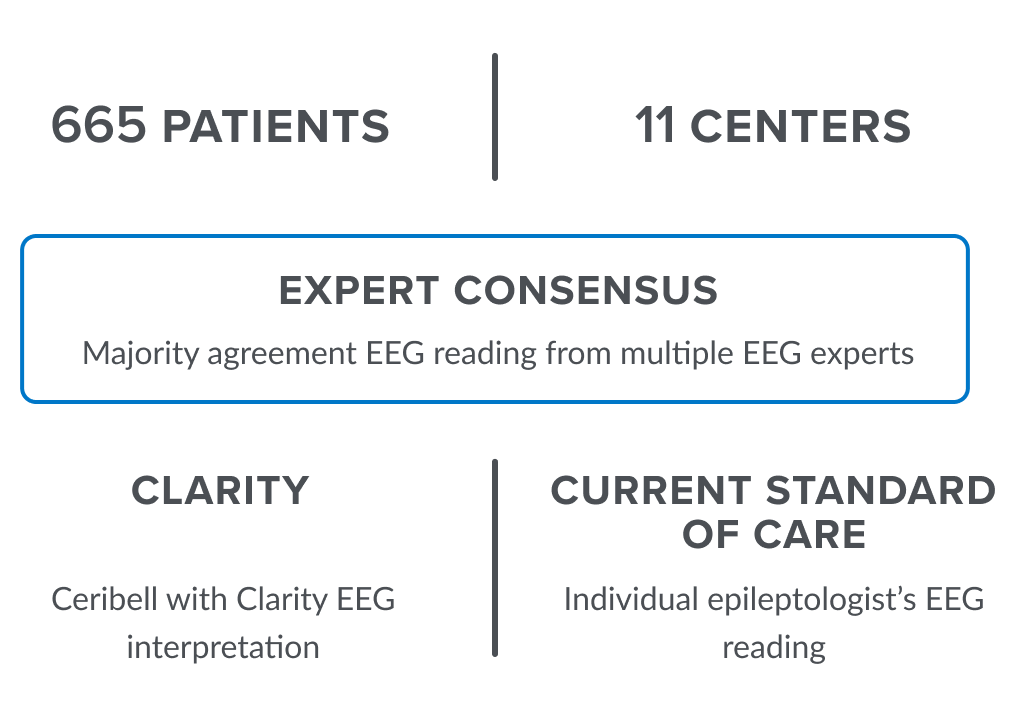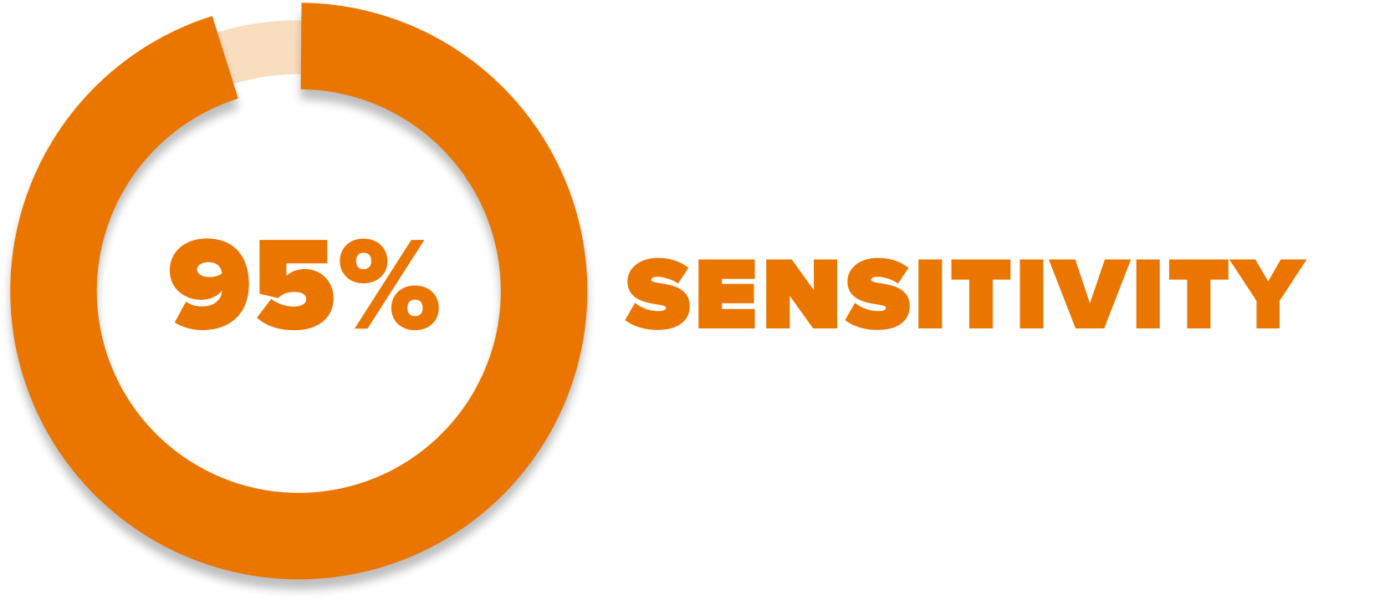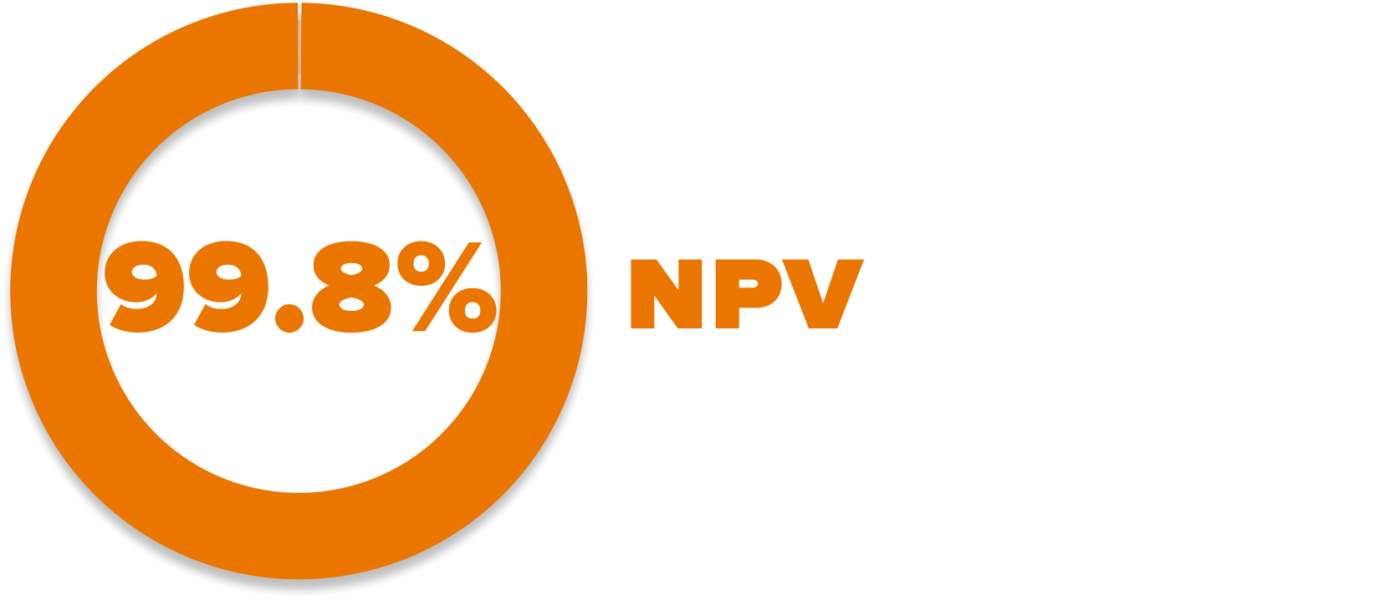
Clinical Data and Supporting Evidence: Clarity™ Study
ClarityPro has been validated to consistently alert for suspected status epilepticus and rule out seizures
Ceribell with Clarity was demonstrated to differentiate EEGs with and without status epilepticus with high sensitivity and specificity.
Understanding the Clarity AI Algorithm
Clarity is a machine learning algorithm within the Ceribell system that has been trained on thousands of hours of expert annotated critical care EEGs with the goal of alerting to or ruling out life-threatening continuous seizures also known as status epilepticus.
Study Design

NEW DATA from a larger retrospective assessment of 665 adult patients who underwent evaluation of possible seizures with Point-of-Care EEG system
The study assessed the performance of Ceribell with Clarity to triage seizure activity in critical care and emergency department settings
Key Results
Clarity for detection of status epilepticus

Clarity detected ≥ 90% seizure burden, thereby triggering an alert for impending status epilepticus, in 19 out of 20 cases (95% sensitivity)
Clarity for ruling out status epilepticus

Of the 450 EEG recordings in which Clarity detected no seizures, seizures were identified by the expert reviewers in only 4 cases.
Seizure Burden Yield
- 5% of EEGs resulted in a bedside alert (had a seizure burden ≥ 90%)
- 27% of EEGs had seizure or epileptiform abnormalities that did not result in a bedside alert (seizure burden between 1%-90%)
- 68% of EEGs were identified as normal or slow (0% seizure burden)

Inter-rater Variability
- All 4 neurologists have fellowship training in epilepsy
- Human neurologists show variability in detection of status epilepticus


Resources
In The News
Webinar
Mountainview Hospital: Clarity detected NCSE and Persistent Seizure Activity was Aborted
Watch Our WebinarWebinar
References and Citations
1. Kamousi, B., et al. (2023) NCS Annual Meeting. 39:s1-s268
2. Kamousi, B., et al. (2021) Neurocrit Care. 34(3):908-917